
Gardening in young soil
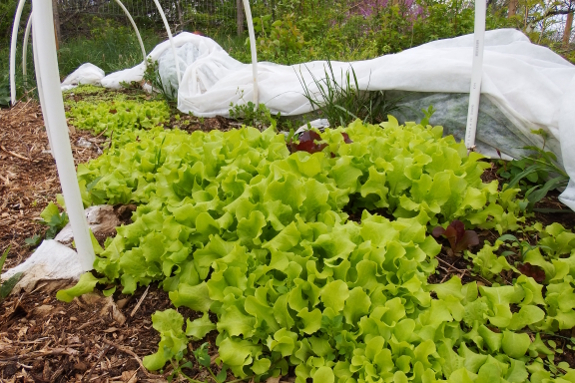
We've been in Ohio for a year and a half, but took us six months (most
of that winter) to get the fence going so we could safely plant inside.
Which means our vegetable garden is just about a year old.
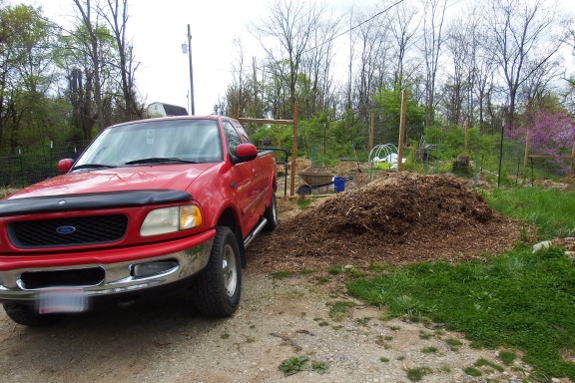
During that year, I've been learning local biomass sources. Most are
higher-carbon and less-aged than I'd prefer, but they make up for what
they lack in quality in their quantity and ease of hauling. When the
road-clearing crew dumped a huge pile of wood chips right by my garden
gate last year, I decided I love being close to a road!
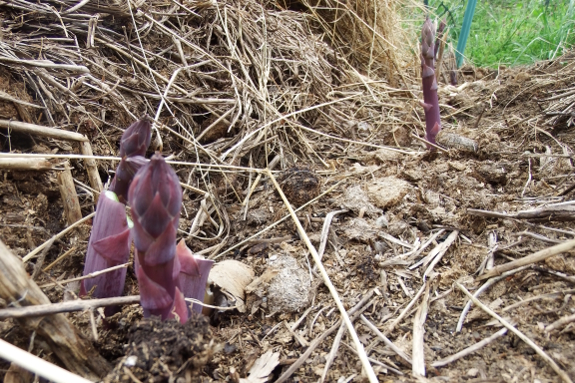
At the same time, I'm remembering what it was like to plant into young
garden soil. Between cover crops
and copious additions of organic
matter, I'd gotten my Virginia soil primed so growing there was
nearly like planting into big mounds of potting soil. Up here, the clay
subsoil is close to the surface and the biomass I'm adding is only
gradually working its way down through no-till layers of cardboard and
newspaper.
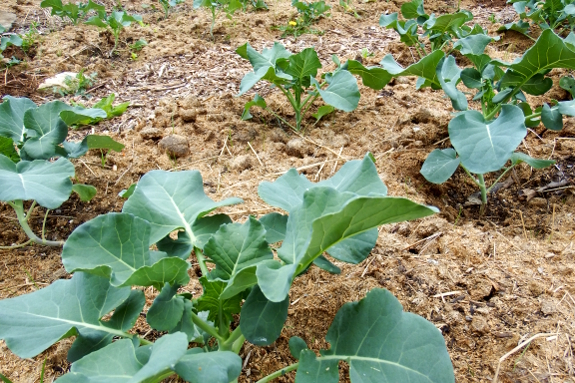
So I garden a little differently. Applying half-composting horse
manure/wood chips is acceptable in most garden areas (although the
combo did kill a barely-survived-the-winter thyme plant). The trick is
to pull the mixture back a bit from the plants (sidedressing instead of
topdressing). If possible, I also apply manure at least a month before
my planting date.
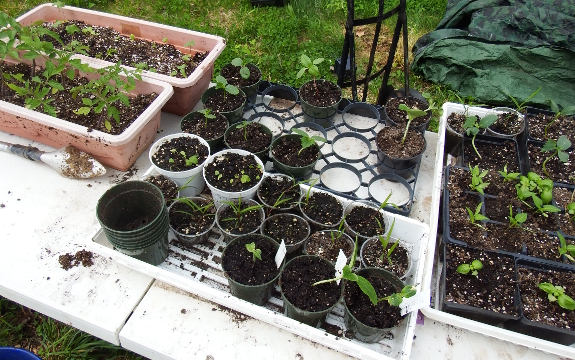
I've also been starting more seedlings inside, potting them up into
small cups and letting them grow for a few weeks before setting them
out into the garden. The reason for this is twofold.
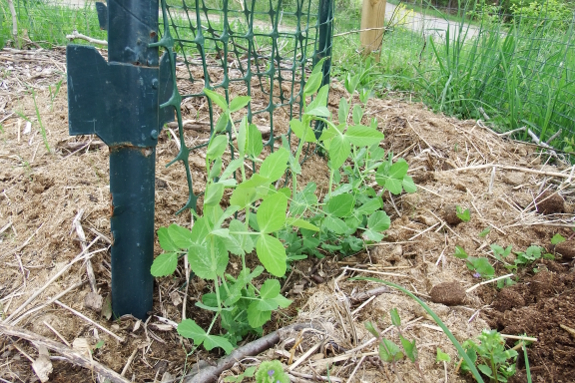
First, it's tougher to get seeds to sprout happily in subpar soil
(especially since I'm irrigating less now that we're on city water).
Second, voles have moved in and are nibbling up young sprouts
(especially my peas!). As you can see in the photo above, the ornery
rodents ate all of my direct-seeded plants (on the other side of the
trellis), while they left older transplants alone.
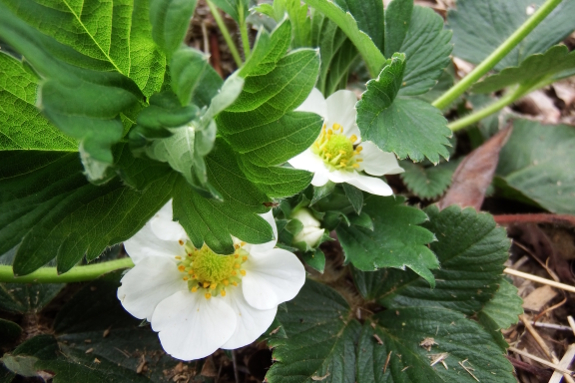
Starting spring crops inside is also handy because the soil takes
longer to warm up in Ohio. Our strawberries are just now starting to
bloom, two or three weeks later then they tended to in Virginia. That
means annuals would also be two or three weeks behind...if I hadn't
jumped the gun with early seeding indoors.
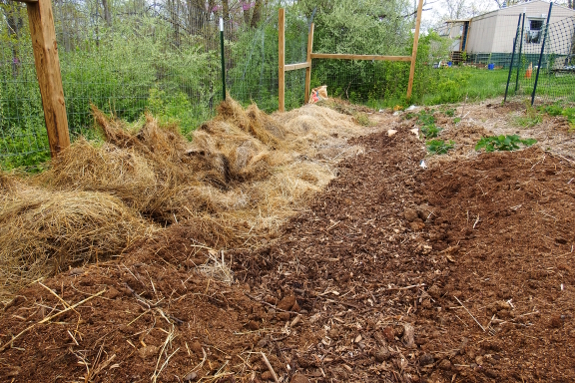
Of course, that's all short-term fixes that will be in the rear-view
mirror in a few short years. To boost our soil's fertility fast, I'm
layering huge quantities of organic matter in areas I won't be planting
into for several months.
First came the spoiled hay (left) from a local farmer --- she had more
of it than I could handle, but I piled up as much as I could to start
building the soil. Aisles of wood chips (middle) will feed fertility
more slowly, while new beds made of deeply mounded horse bedding/manure
(right) will rot down within a few months.
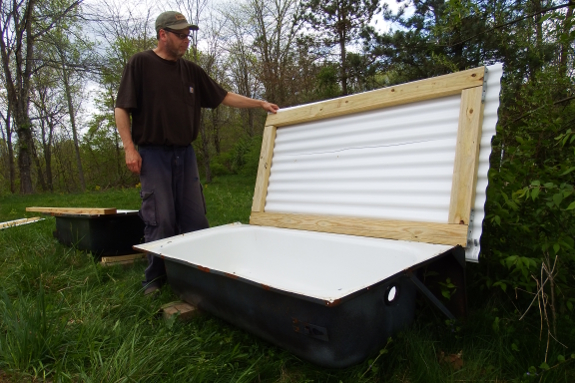
As if that's not enough, Mark is building me worm bins out of old
bathtubs. We'll fill these up with horse manure as well (so easy to
accumulate now that it can be scooped into our truck then unloaded
directly into our garden on the other end!). By this time next year, we
should be overflowing in good, rich compost to feed our dirt.
Want more in-depth information? Browse through our books.
Or explore more posts by date or by subject.
About us: Anna Hess and Mark Hamilton spent over a decade living self-sufficiently in the mountains of Virginia before moving north to start over from scratch in the foothills of Ohio. They've experimented with permaculture, no-till gardening, trailersteading, home-based microbusinesses and much more, writing about their adventures in both blogs and books.
Want to be notified when new comments are posted on this page? Click on the RSS button after you add a comment to subscribe to the comment feed, or simply check the box beside "email replies to me" while writing your comment.
- Remove comment
- Remove comment
